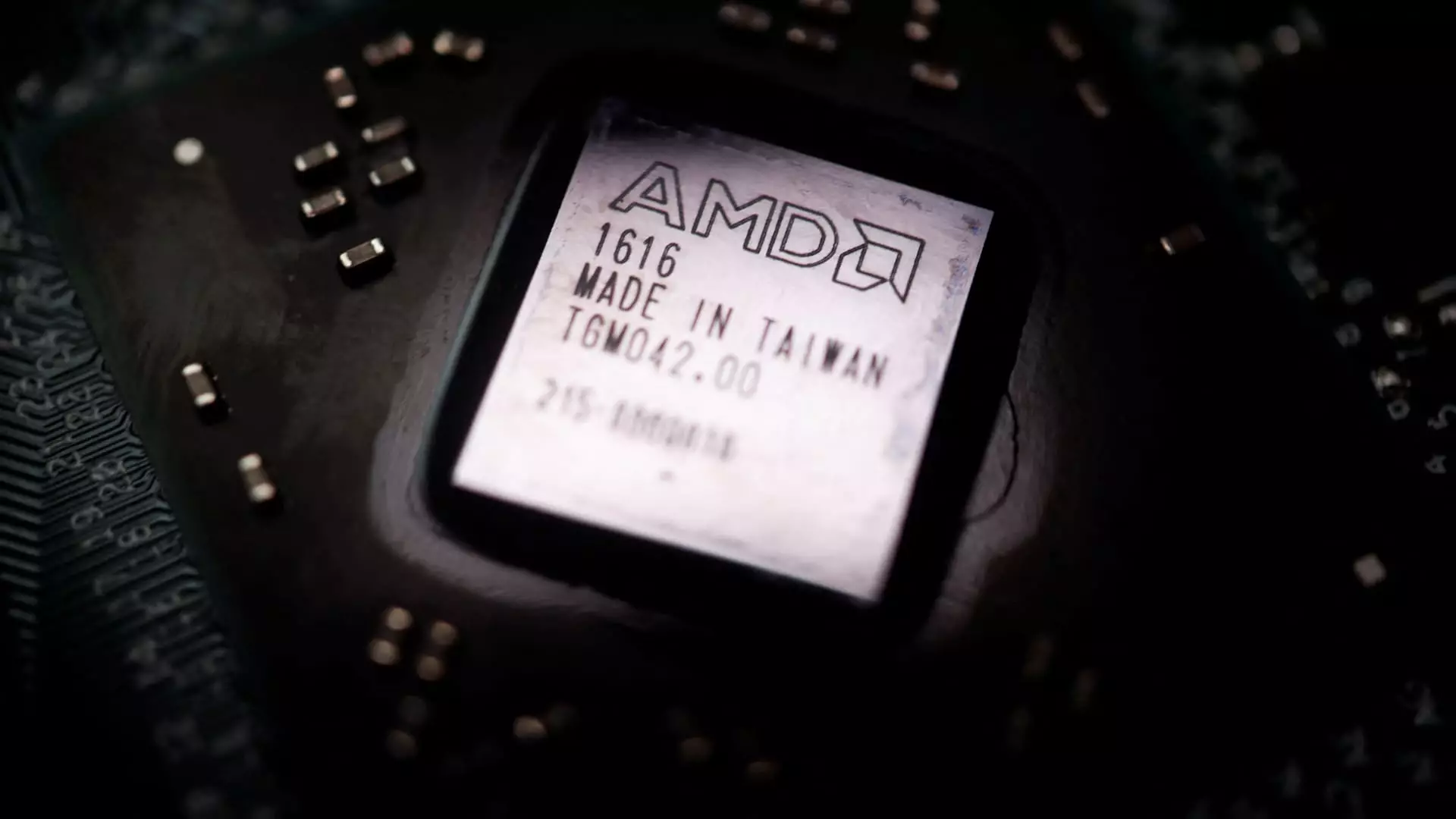Advanced Micro Devices (AMD) is currently navigating through a challenging market characterized by fierce competition, especially in the burgeoning field of artificial intelligence (AI). Recent insights from HSBC’s analyst Frank Lee indicate a somber outlook for AMD investors as the firm downgraded the semiconductor stock from a “buy” to a “reduce” rating. This decision was further compounded by a significant reduction in their price target for AMD, slashing it from $200 to $110 per share. Lee’s forecast suggests that AMD may experience a troubling drop of approximately 13% from its recent closing price, putting investors on high alert.
The competitive landscape for graphic processing units (GPUs)—a critical component for driving AI applications—is becoming increasingly crowded, with major players such as Nvidia, Marvell, and Broadcom intensifying their efforts. Even as AMD shares have already seen a notable decline of 26% in just three months, the firm’s opportunity to rebound seems constrained. Given the pressing nature of these challenges, investors may need to recalibrate their expectations about the company’s future performance.
Assessing AMD’s AI GPU Roadmap
HSBC’s downgrade stems largely from concerns about AMD’s AI GPU roadmap. The bank’s analysis suggests that the current trajectory appears less competitive than previously assessed. Despite initial optimism, it seems that AMD may struggle to establish a stronger foothold in the AI GPU market. Analyst Lee specifically pointed out the lukewarm demand for AMD’s new MI325 GPU, further exacerbated by Samsung’s difficulties in ramping up production of its advanced HBM3e memory. These challenges could hinder AMD’s growth patterns, particularly concerning its projected AI GPU momentum for the first half of 2025.
With this more pessimistic viewpoint, Lee and his team suggest that investors should approach AMD with caution. Their commentary emphasizes the vulnerabilities inherent in AMD’s strategic plans and highlights the pressing need for the company to refine its competitive edge in an evolving technological landscape.
Slower Growth Beyond AI
Adding another layer of complexity to the picture, HSBC predicts that AMD’s momentum outside of the AI sector will be lackluster. Although the firm expects client revenue to rise by 12% for the fiscal year 2025—outpacing the overall projected unit growth of 4% in the PC notebook sector—this growth represents a substantial slowdown from the impressive 44% year-over-year increase anticipated for 2024.
The discrepancies in expected growth could cast a shadow over AMD’s overall market performance. Even amid a generally favorable analytical outlook, with 43 out of 54 analysts maintaining a “buy” or “strong buy” rating, this downgrade serves as a critical reminder of the market’s volatility and the inherent risks associated with AMD’s stock.
While AMD remains a key player in the semiconductor industry, the road ahead is fraught with challenges that investors must consider. The competition in the AI space is intensifying, and with a potential deceleration in growth beyond this domain, AMD’s future remains uncertain. Investors would do well to approach their investments with caution and remain attuned to the evolving dynamics in the semiconductor market. As the competition heats up and consumer demand fluctuates, making informed decisions will be critical for stakeholders invested in AMD.

